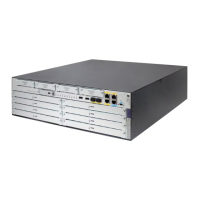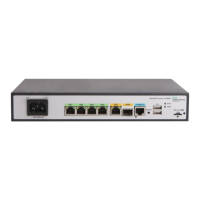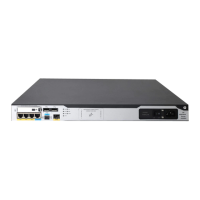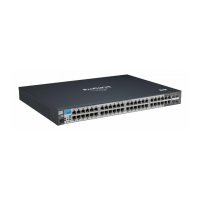86
Configuring basic DHCP snooping
Follow these guidelines when you configure basic DHCP snooping:
• Specify the ports connected to authorized DHCP servers as trusted ports to make sure that
DHCP clients can obtain valid IP addresses. The trusted ports and the ports connected to
DHCP clients must be in the same VLAN.
• You can specify Layer 2 Ethernet interfaces and Layer 2 aggregate interfaces as trusted ports.
For more information about aggregate interfaces, see Layer 2—LAN Switching Configuration
Guide.
• The DHCP snooping configuration on a Layer 2 Ethernet interface that has been added to an
aggregation group does not take effect unless the interface leaves the aggregation group.
• DHCP snooping can work with QinQ to record VLAN tags for DHCP packets received from
clients. For more information about QinQ, see Layer 2—LAN Switching Configuration Guide.
To configure basic DHCP snooping:
Step Command Remarks
1. Enter system view.
system-view
N/A
2. Enable DHCP snooping.
dhcp snooping enable
By default, DHCP snooping is
disabled.
3. Enter interface view.
interface
interface-type
interface-number
This interface must connect to the
DHCP server.
4. Specify the port as a trusted
port.
dhcp snooping trust
By default, all ports are untrusted
ports after DHCP snooping is
enabled.
5. Return to system view.
quit
N/A
6. Enter interface view.
interface
interface-type
interface-number
This interface must connect to the
DHCP client.
7. (Optional.) Enable recording
of DHCP snooping entries.
dhcp snooping binding
record
By default, after DHCP snooping is
enabled, recording of DHCP
snooping entries is disabled.
Configuring Option 82
Follow these guidelines when you configure Option 82:
• The Option 82 configuration on a Layer 2 Ethernet interface that has been added to an
aggregation group does not take effect unless the interface leaves the aggregation group.
• To support Option 82, you must configure Option 82 on both the DHCP server and the DHCP
snooping device. For information about configuring Option 82 on the DHCP server, see
"Enabling handling of Option 82."
• If
the handling strategy is replace, configure a padding mode and padding format for Option 82.
If the handling strategy is keep or drop, you do not need to configure any padding mode or
padding format for Option 82. The settings do not take effect even if you configure them.
• If Option 82 contains the device name, the device name must contain no spaces. Otherwise,
DHCP snooping drops the message. You can use the sysname command to specify the device
name. For more information about this command, see Fundamentals Command Reference.
• DHCP snooping uses "outer VLAN tag.inner VLAN tag" to fill the VLAN ID field of sub-option 1
in verbose padding format if either of the following conditions exists:
{ DHCP snooping and QinQ work together.
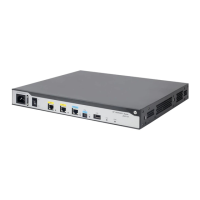
